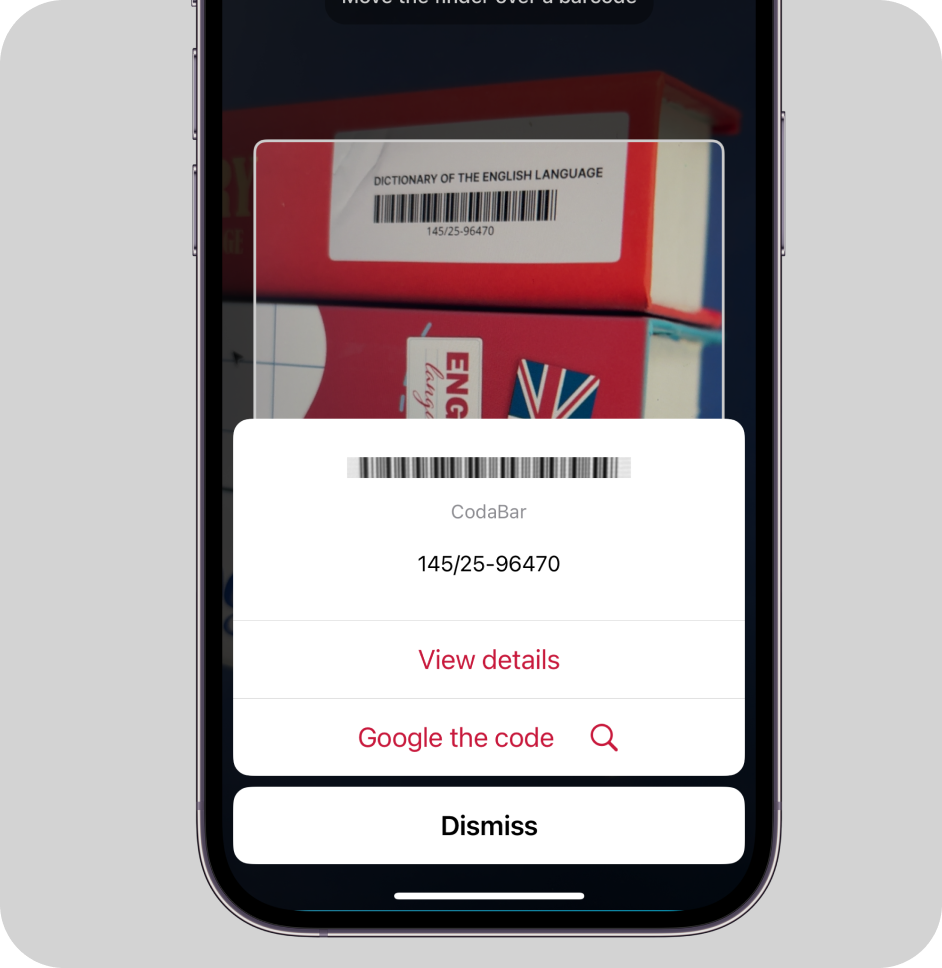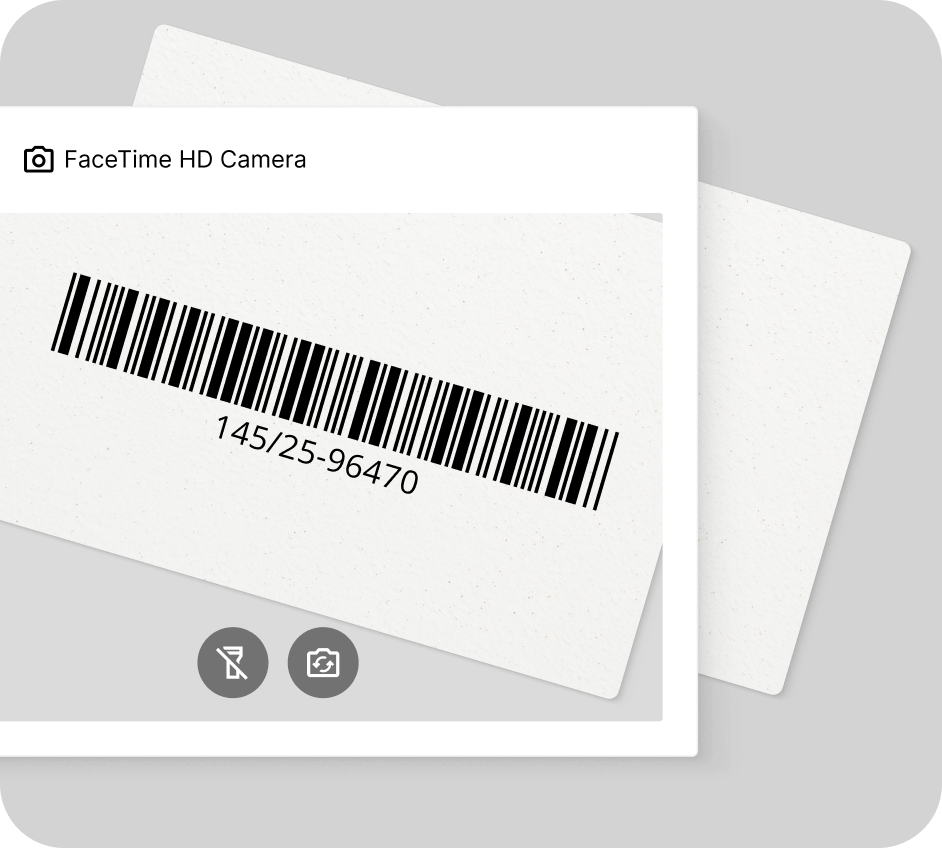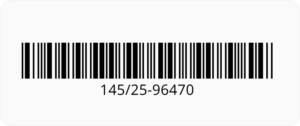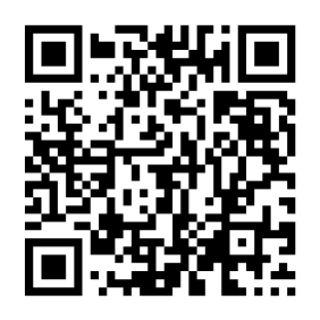Codabar Reader
Add Codabar scanning to your mobile application or website
Trusted by
400+
global
industry leaders
Turn smartphones into fast & reliable Codabar scanners
The Scanbot Codabar Scanner SDK ensures outstanding performance, even in demanding scenarios – such as scanning damaged barcodes or smaller codes often encountered in healthcare and logistics environments. With a scanning speed of under 0.04 seconds, your users get instant reads for seamless workflows.
Key benefits include:
- Offline scanning: The Scanbot SDK works 100% on-device, ensuring both uninterrupted performance and data security.
- Enterprise support: Questions or requests? Contact our technical support team. We’re happy to assist you.
- Flat pricing model: Cost stays the same no matter how much your user base or scanning volume grows.


How this scanning tool works
Our free online Codabar barcode scanning software reads codes directly through your camera or on imported images. This barcode reader works in any browser, no app download or signup needed. Enjoy real-time camera view scanning or decode barcodes on pictures in seconds – just point your camera at the Codabar or import an image file to instantly access the data encoded.
This tool is powered by the Scanbot Barcode Scanner SDK!
(We don’t store any images or data you import. Everything stays on your device.)
Understanding Codabar barcodes
What are Codabar codes?
The Codabar is a one-dimensional (1D) linear barcode symbology developed in 1972 by Pitney Bowes. It has a built-in error detection mechanism that reduces the risk of misreads. This barcode type is designed to be read on printed forms, especially from dot-matrix printers. While newer barcode formats can store significantly more information in a smaller area, Codabar remains in use. It is still commonly used in libraries (on book spines).

Codabar barcodes are made up of a sequence of bars and spaces that represent numeric digits along with a limited selection of special characters. They can encode up to 16 different characters, which includes four start/stop characters. Codabar is also referred to by several other names, including Codeabar, Ames Code, NW-7, Monarch, and USD-4.
Applications of Codabar codes
Libraries
Libraries use Codabar barcodes to effectively manage their collection of books and other materials. Each item is assigned a Codabar barcode, which allows for easy tracking during checkouts and returns. This system streamlines library operations, helping staff quickly locate materials and maintain accurate inventory records.
Healthcare
Codabar codes are essential in healthcare for patient identification and specimen tracking. They are widely used in blood banks for labeling samples and managing inventory, as well as in laboratories for tracking specimen tubes, ensuring accurate matching and reducing the risk of errors.
Logistics
In logistics, Codabar is commonly used for labeling packages and tracking shipments. The barcode enables quick scanning and identification of packages at various points in the shipping process, ensuring accurate tracking and improving operational efficiency.
Structure of Codabar codes
Codabar can encode a total of 16 different characters, which includes the numeric digits 0-9 and a limited set of special characters: $, +, -, ., /, and :. This total also accounts for the four start and stop characters (A, B, C, and D), which indicate to scanners where the encoded data begins and ends.
The structure of Codabar allows for variable-length barcodes, making it adaptable for various applications that require straightforward data representation, such as in healthcare and logistics. Additionally, Codabar is a self-checking barcode, enhancing its reliability in environments where accurate data capture is essential.
Advantages of Codabar codes
- Compact size: Codabar codes are designed to encode essential information in a compact format, making them suitable for labeling items of various sizes in applications such as healthcare and libraries.
- Self-checking symbology: They include a self-checking feature that allows it to verify its own integrity during scanning. This helps ensure accurate data capture, even if the barcode experiences minor wear or smudging.
- Scalability: Codabar codes can accommodate variable-length data, allowing for flexibility in encoding information based on specific application needs.
- Versatility: They are compatible with many systems used in healthcare, logistics, and library management. Their straightforward design allows for easy generation and decoding.
Why choose the Scanbot SDK for Codabar scanning?
The Scanbot Barcode Scanner SDK is specifically designed to handle the challenges of decoding Codabar codes in real-world scenarios.
What sets us apart:
- Exceptional performance: Reliably decodes even damaged, low-contrast or distorted barcodes.
- High-speed scanning: Read Codabar codes in as little as 0.04 seconds.
- Cross-platform compatibility: Easily integrate with Android, iOS, cross-platform, web, Windows, and Linux platforms.
- Customizable UI: Customize the ready-to-use components to match your app or website design.
- Privacy-first: Operates offline for complete data security.
Whether your use case involves Codabar barcodes, QR codes or any other barcode, the Scanbot SDK delivers the accuracy, speed, and reliability you need to succeed.
Related Barcode Types:
- Data Matrix Scanner
- QR Code Scanner
- PDF417 Scanner
- Aztec Code Scanner
- Code 128 Scanner
- Code 39 Scanner
- EAN Scanner
- UPC Scanner
- Micro QR Code Scanner
- GS1 DataBar Scanner
- GS1 DataMatrix Scanner
- GS1-128 Scanner
- MaxiCode Scanner
- ITF Scanner
- Intelligent Mail Barcode Scanner
- rMQR Code Scanner
- Royal Mail Scanner
- Micro PDF417 Scanner
Frequently Asked Questions
What is a Codabar barcode?
A Codabar barcode is a 1D barcode that uses bars and spaces to encode up to 16 characters, including numeric digits, a limited selection of special characters, and four start/stop characters. It includes built-in error detection and is designed for printed forms. Codabar is still used today, commonly in libraries on book spines.
Is Codabar still used?
Yes, Codabar is still used today in libraries for labeling book spines, as well as in blood banks and other industries that rely on simple and reliable barcodes. However, it has become more outdated, as newer code forms can encode more information and are generally smaller.
What is Codabar used for?
Codabar is used in libraries for labeling book spines, on blood bank forms and other forms requiring simple and reliable barcode solutions.
How can Scanbot SDK help you with Codabar scanning?
The Scanbot Codabar barcode reader delivers exceptional performance in challenging environments, including damaged or curved barcodes, with a scanning speed of under 0.04 seconds for seamless workflows. The SDK is available for both web and mobile devices. Try it now with a free trial license.



